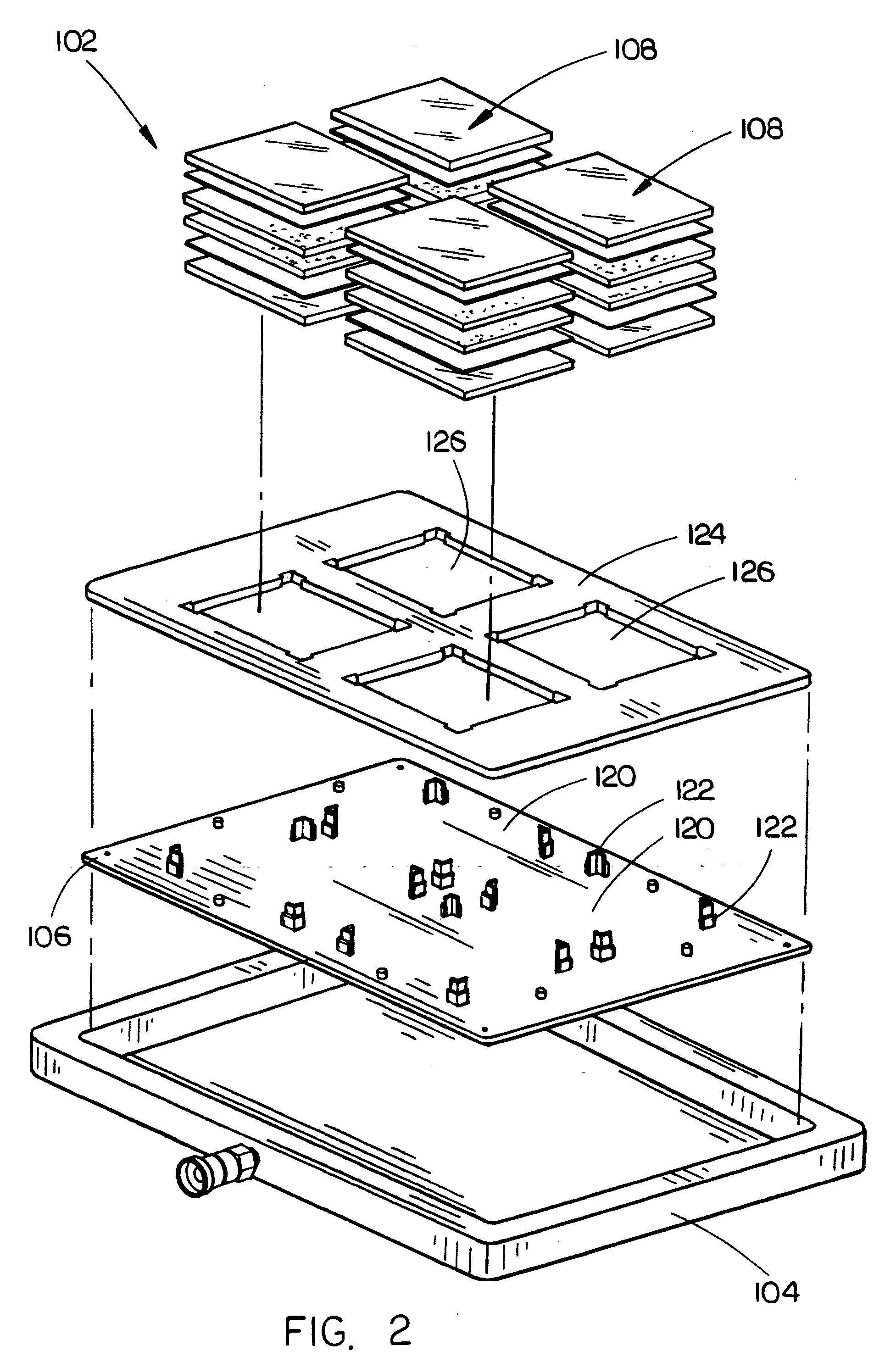Planarization treatment of pressure sensitive adhesive for rigid-to-rigid substrate lamination
a technology of pressure sensitive adhesive and rigid-to-rigid substrate, which is applied in the field of lamination processes, can solve the problems of inconvenient use of other current lamination processes, such as dry-film lamination processes, and may not be suitable for rigid-to-rigid substrate lamination
- Summary
- Abstract
- Description
- Claims
- Application Information
AI Technical Summary
Benefits of technology
Problems solved by technology
Method used
Image
Examples
Embodiment Construction
[0018]Reference will now be made in detail to the presently preferred embodiments of the invention, examples of which are illustrated in the accompanying drawings.
[0019]Referring generally to FIGS. 1-6 a system for performing planarization treatment of pressure-sensitive adhesive (PSA), such as commercially available PSA (ex—dry film pressure-sensitive adhesive, acrylic lamination material), is shown in accordance with an exemplary embodiment of the present invention. The planarization process / treatment of the present invention is performed for promoting increased suitability of the PSA for use in lamination processes, such as rigid-to-rigid lamination processes, in which rigid substrates may be joined / secured together via the PSA, said substrates being optical or non-optical substrates, or sheet-like assemblies (ex—Liquid Crystal Displays (LCDs), Organic Light-Emitting Diodes (OLEDs), Circuit Boards, Heat Sinks, etc.), in such a manner as to avoid the appearance of undesirable opti...
PUM
| Property | Measurement | Unit |
|---|---|---|
| pressure | aaaaa | aaaaa |
| pressure | aaaaa | aaaaa |
| pressure | aaaaa | aaaaa |
Abstract
Description
Claims
Application Information
 Login to View More
Login to View More - R&D
- Intellectual Property
- Life Sciences
- Materials
- Tech Scout
- Unparalleled Data Quality
- Higher Quality Content
- 60% Fewer Hallucinations
Browse by: Latest US Patents, China's latest patents, Technical Efficacy Thesaurus, Application Domain, Technology Topic, Popular Technical Reports.
© 2025 PatSnap. All rights reserved.Legal|Privacy policy|Modern Slavery Act Transparency Statement|Sitemap|About US| Contact US: help@patsnap.com



